Craving Keema? Try This Veggie Version That Tastes Better
Do you find yourself missing the rich, spicy flavors of traditional keema but want to make healthier choices? You’re not alone. Many of us crave those familiar comfort foods but struggle with the health implications of consuming meat regularly. What if I told you there’s a zero-oil soya keema recipe that not only mimics the texture and taste of the original but actually elevates it? 🌱
This game-changing veggie keema made with soya granules delivers all the satisfaction of traditional keema without the guilt. Imagine serving up a plate of aromatic, perfectly spiced keema that pairs beautifully with pav or paranthas, knowing it’s completely plant-based and oil-free! In the following sections, we’ll explore the surprising health benefits of soya keema, guide you through the essential ingredients for that authentic flavor, walk you through the simple cooking process, suggest perfect pairings, and show you how to customize this versatile dish to suit your exact preferences.
The Health Benefits of Soya Keema
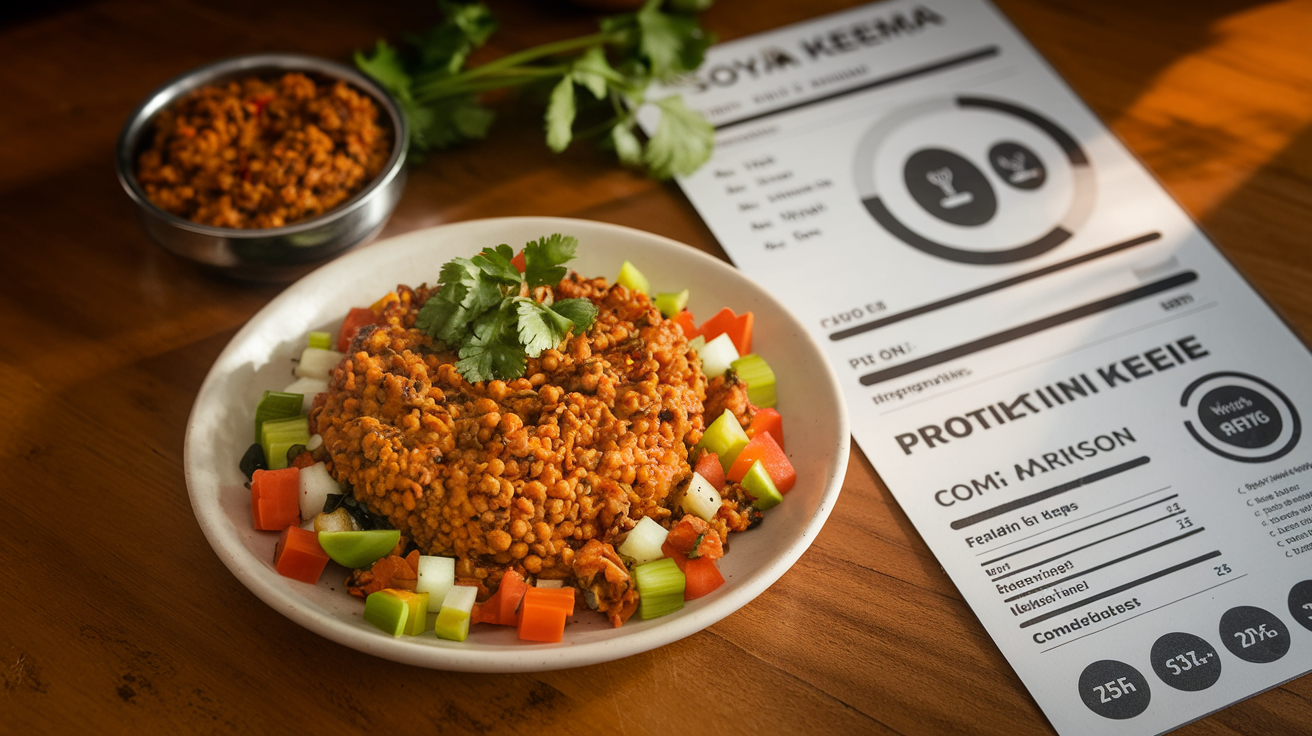
The Health Benefits of Soya Keema
Switching to soya keema from traditional meat-based versions doesn’t just satisfy your taste buds—it offers a multitude of health benefits that make it a superior choice for health-conscious food lovers. This vegetarian alternative delivers impressive nutritional advantages while maintaining the rich, satisfying texture and flavor profile that keema lovers crave.
Protein-rich Meat Alternative
Soya keema stands out as an exceptional protein-rich meat alternative in the world of vegetarian cuisine. Similar to the walnut keema mentioned in our reference, soya provides that essential protein kick that vegetarians and vegans often seek. While traditional meat keema relies on animal protein, soya keema delivers comparable protein content through plant-based sources.
The protein content in soya keema makes it an ideal option for:
- Muscle maintenance and development
- Satiety and hunger management
- Supporting overall metabolic health
- Meeting daily protein requirements for vegetarians
Unlike some vegetarian alternatives that fall short on protein, soya keema provides a complete protein profile with all essential amino acids. This makes it nutritionally comparable to meat versions while eliminating concerns associated with animal products. For those transitioning to a vegetarian diet or simply looking to reduce meat consumption, soya keema offers a satisfying way to maintain protein intake without compromise.
Zero-oil Cooking Advantages
One of the most significant health benefits of soya keema comes from its adaptability to zero-oil cooking methods. Unlike traditional keema preparations that often require significant amounts of ghee or butter for flavor and moisture, soya keema can be prepared with minimal or no added oils.
The reference content mentions how traditional keema preparations typically use ghee or butter as a base for toasting spices. With soya keema, you can:
- Use water or vegetable broth instead of oil for sautéing
- Rely on the natural moisture content of vegetables and tomatoes
- Achieve rich flavor through spices rather than fats
- Significantly reduce calorie content without sacrificing taste
This zero-oil advantage makes soya keema particularly beneficial for those monitoring cholesterol levels, managing heart health, or simply looking to reduce their overall caloric intake while still enjoying flavorful, satisfying meals.
Nutritional Profile Comparison with Traditional Keema
When comparing soya keema to traditional meat-based versions, the nutritional advantages become even more apparent:
| Nutrient | Soya Keema | Traditional Meat Keema |
|---|---|---|
| Protein | High (plant-based) | High (animal-based) |
| Fat | Low (especially saturated) | High (includes saturated fat) |
| Cholesterol | Zero | Moderate to high |
| Fiber | High | Negligible |
| Calories | Lower | Higher |
| Antioxidants | Present | Minimal |
Similar to the mushroom keema described in our reference content, soya keema incorporates various vegetables and spices that add nutritional value beyond just protein. The combination of soya with ingredients like onions, garlic, ginger, and various spices creates a nutrient-dense dish that offers:
- Increased fiber content for digestive health
- Lower saturated fat for heart health
- Zero cholesterol compared to meat versions
- Additional vitamins and minerals from vegetable ingredients
- Beneficial phytonutrients from spices and herbs
The nutritional profile of soya keema also benefits from the versatility in preparation methods. Like the walnut keema preparation mentioned in our reference, soya keema can incorporate additional vegetables like grated cauliflower to further enhance its nutritional value while maintaining the desirable texture.
Now that we’ve explored the impressive health benefits of soya keema, let’s dive into the essential ingredients that make this vegetarian alternative truly shine. In the next section, “Essential Ingredients for Perfect Veggie Keema,” we’ll discover the key components that transform simple soya into a flavorful, meat-like culinary experience that will satisfy even the most dedicated keema enthusiasts.
Essential Ingredients for Perfect Veggie Keema
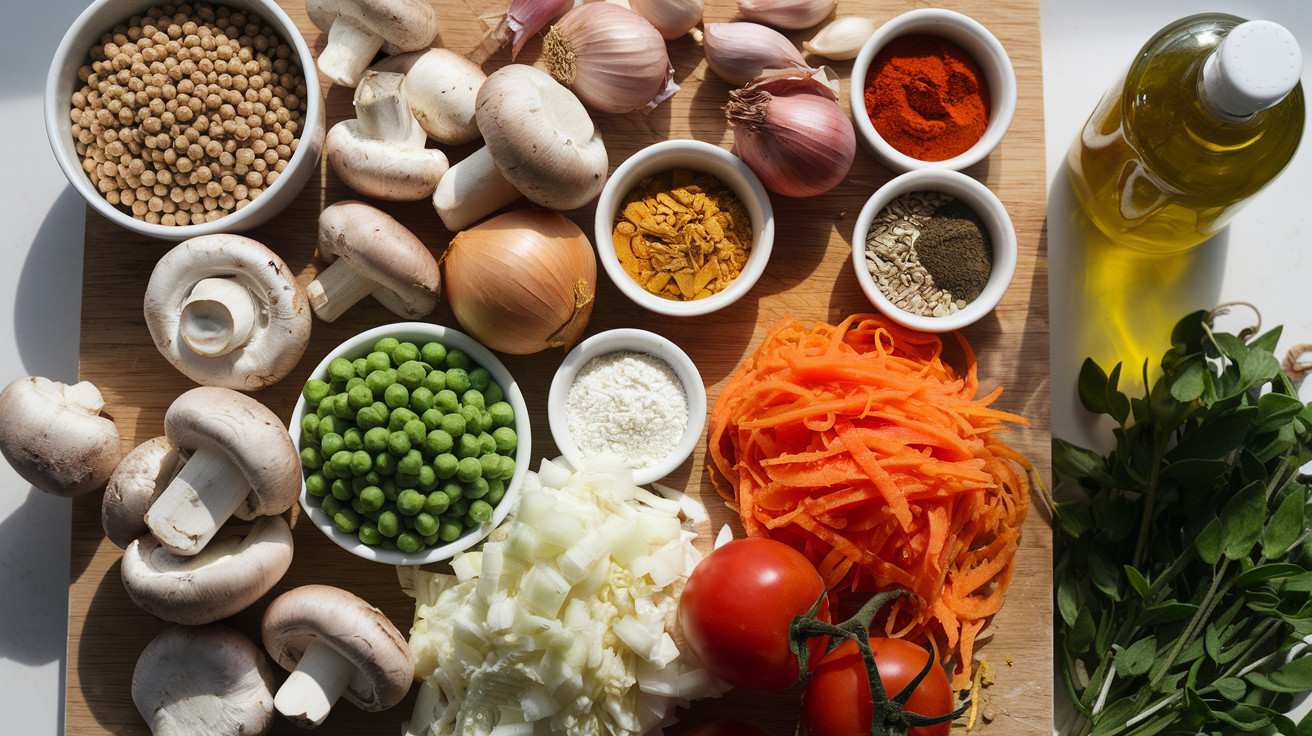
Essential Ingredients for Perfect Veggie Keema
Now that we’ve explored the impressive health benefits of Soya Keema, let’s dive into the essential ingredients that make this vegetarian dish truly shine. Creating the perfect veggie keema requires a thoughtful selection of ingredients that work together to replicate the texture and flavor profile of traditional meat-based keema.
A. Soya granules as the base
Soya granules form the foundation of our vegetarian keema, providing both texture and protein. Unlike soya chunks, these granules have a fine, granular texture that closely mimics minced meat, making them the ideal choice for this dish. The granules are derived from defatted soya flour and serve as textured vegetable protein that absorbs flavors exceptionally well.
When preparing soya granules for your keema, proper hydration is crucial. The reference recipe suggests boiling the granules and then draining them thoroughly to achieve the right consistency. This step ensures that your soya keema will have that perfect bite without being too soggy or too dry. Always check the freshness of your soya granules before use, as this can significantly impact the final taste of your dish.
B. Key spices for authentic flavor
The authentic flavor of veggie keema comes from a carefully balanced blend of spices. Based on our reference content, the essential spice mix includes:
- Cumin seeds for tempering
- Turmeric powder for color and earthy notes
- Red chili powder for heat
- Garam masala for complex, aromatic depth
- Green chilies for fresh spiciness
These spices create the signature taste profile that makes soya keema reminiscent of its meat counterpart. The cooking process typically begins with tempering the spices in oil, allowing their flavors to bloom before adding other ingredients. This method ensures that the spices permeate the entire dish, providing that authentic keema flavor in every bite.
Additionally, the recipe includes ginger-garlic paste as a flavor base, which adds a pungent, aromatic quality that’s essential to Indian cooking. This paste is usually sautéed until its raw smell disappears, creating a fragrant foundation for the rest of the ingredients.
C. Fresh vegetables to enhance taste
While soya granules and spices form the core of veggie keema, fresh vegetables add dimension, nutrition, and visual appeal to the dish. According to our reference content, the key vegetables include:
- Onions, sautéed until golden brown, providing sweetness and texture
- Tomatoes, cooked until soft, contributing acidity and richness
- Green peas, adding pops of color and sweetness
- Capsicum (bell peppers), offering crunch and freshness
These vegetables not only enhance the flavor profile but also improve the nutritional value of the dish. The onions and tomatoes create a flavorful base when sautéed with the spices, while green peas and capsicum add textural contrast.
For additional freshness and aroma, the recipe suggests incorporating fresh mint leaves and garnishing with ginger juliennes and herbs before serving. Some versions also include a touch of yogurt, which adds creaminess and helps bind the ingredients together while balancing the spice levels.
The beauty of veggie keema lies in its versatility—you can adjust the vegetables based on seasonal availability or personal preference while maintaining the dish’s essential character. This plant-based mince curry is remarkably adaptable while still delivering the satisfaction of a hearty, protein-rich meal.
With these essential ingredients in your pantry, you’re well-equipped to create a delicious plant-based keema curry that will satisfy even the most dedicated meat-eaters. In the next section, we’ll walk through the Step-by-Step Cooking Process, showing you exactly how to combine these ingredients for the perfect veggie keema.
Step-by-Step Cooking Process
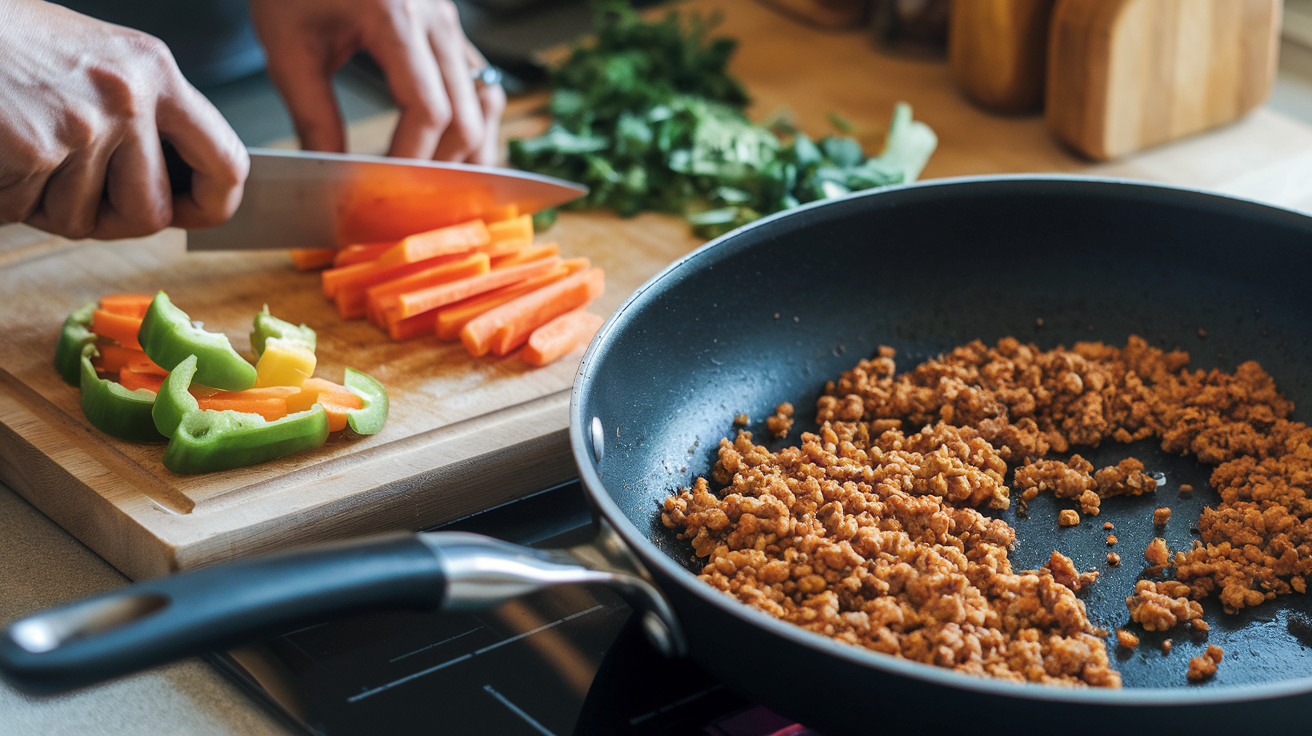
Step-by-Step Cooking Process
Now that we have gathered all the essential ingredients for our veggie keema, it’s time to dive into the cooking process. The perfect soya keema requires attention to detail and proper technique to achieve that authentic texture and flavor that rivals traditional meat keema.
Proper Pan Preparation Techniques
The foundation of a delicious soya keema begins with proper pan preparation. Start by selecting a deep, heavy-bottomed pan that distributes heat evenly. This ensures your keema cooks uniformly without burning.
Heat the pan over medium flame and add ghee (or your preferred oil). When the ghee is hot but not smoking, add cumin seeds and allow them to splutter. This initial tempering process releases essential aromatic oils that form the flavor base of your dish.
For optimal results, ensure your pan is thoroughly heated before adding any ingredients. This prevents the spices from sticking and burning, which could impart a bitter taste to your keema.
Correct Sequence for Adding Ingredients
Following the proper sequence of adding ingredients is crucial for developing complex flavors in your soya keema:
-
Aromatics First: Begin by sautéing your aromatics in the tempered ghee. Add finely chopped onions and cook until they turn golden brown, which usually takes about 5-7 minutes.
-
Ginger-Garlic Paste: Next, add the ginger-garlic paste and sauté for an additional 1-2 minutes until the raw smell disappears.
-
Tomatoes: Incorporate tomato pulp or finely chopped tomatoes and cook until they soften completely and the oil begins to separate from the masala. This is a critical step that indicates your base is well-cooked.
-
Spice Incorporation: Add your ground spices including turmeric, red chili powder, and garam masala. Sauté these spices until they form a cohesive mixture with the tomato-onion base.
-
Yogurt Addition: Carefully add whisked yogurt, stirring continuously to prevent it from separating. This adds richness and tanginess to your keema.
-
Hydrated Soya Granules: Finally, add the pre-boiled and drained soya granules along with green peas. Mix thoroughly to ensure the soya absorbs all the flavors.
-
Simmer Stage: Add water to achieve your desired gravy consistency and simmer until the peas are tender and the flavors have melded together perfectly.
Tips for Maintaining Perfect Texture
The texture of soya keema is what sets it apart from other vegetarian dishes. Here are some expert tips to achieve that perfect meat-like consistency:
-
Proper Hydration: Ensure your soya granules are properly hydrated by boiling them in water with salt for the recommended time. Drain thoroughly to remove excess water before adding to your curry.
-
Blending Technique: If using soya chunks instead of granules, blend them after boiling to achieve a fine, mince-like texture similar to traditional keema.
-
Moisture Control: Keep an eye on the moisture level throughout the cooking process. Too much water can make your keema soggy, while too little can make it dry and unappetizing.
-
Slow Cooking: Allow your keema to simmer on low heat for at least 10-15 minutes after adding the soya. This slow cooking process ensures that the soya absorbs all the flavors from the spices and masala.
-
Rest Period: Once cooked, let your keema rest for 5-10 minutes before serving. This allows the flavors to settle and intensify.
-
Stirring Technique: Avoid excessive stirring once the soya has been added to prevent it from breaking down too much. Gentle folding movements work best to maintain texture.
With these techniques mastered, your vegetarian keema will have the perfect texture that mimics meat while offering the nutritional benefits of soya protein. The key is patience and attention to detail throughout the cooking process.
Now that we’ve covered the step-by-step cooking process for our veggie keema, we’ll move on to exploring various serving suggestions and pairings that will complement this protein-rich dish perfectly. The versatility of soya keema makes it an excellent companion to numerous Indian breads and rice preparations, which we’ll discover in the next section.
Serving Suggestions and Pairings
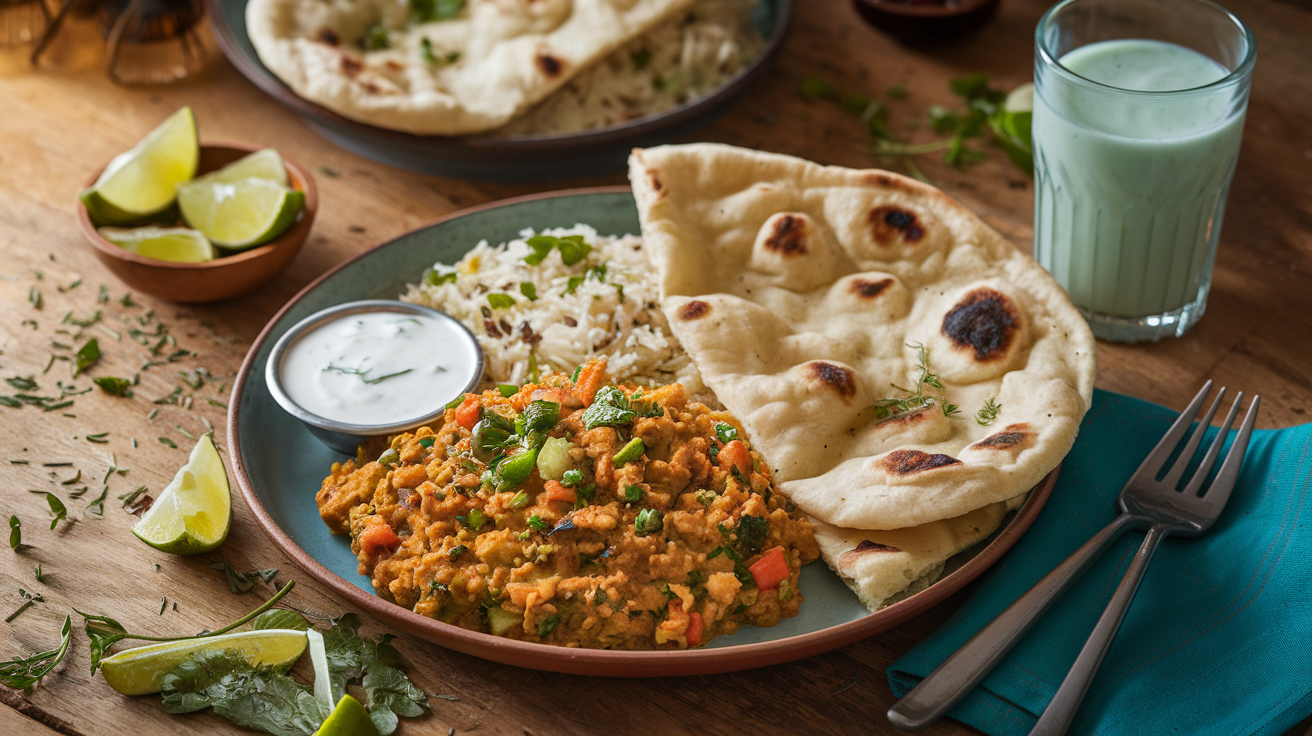
Serving Suggestions and Pairings
Now that we’ve mastered the step-by-step cooking process for our delicious soya keema, let’s explore the various ways to serve this versatile dish. A perfectly prepared veggie keema deserves to be paired with complementary sides that enhance its rich flavors and make for a complete meal experience.
Traditional Accompaniments Like Pav and Paranthas
The classic way to enjoy soya keema is with traditional Indian bread options that have historically paired well with meat-based keema:
-
Buttered Pav: Lightly toast soft pav buns with a generous spread of butter until golden. The crispy exterior and soft interior of the pav create the perfect vessel for scooping up the flavorful soya keema. This combination, reminiscent of the famous keema pav street food, offers a delightful contrast of textures.
-
Fresh Paranthas: Roll out whole wheat dough into flatbreads and cook them on a hot tawa with a touch of ghee. The slightly crisp yet soft paranthas complement the keema perfectly, allowing you to create delicious wraps or simply tear and dip.
-
Rotis: Simple, unleavened flatbreads provide a lighter alternative to paranthas while still offering that authentic Indian dining experience with your veggie keema.
-
Steamed Rice: For those who prefer rice over bread, a simple bowl of steamed basmati rice makes for an excellent base. The neutral flavor of rice allows the complex spices in the soya keema to shine through.
Creative Modern Serving Ideas
Beyond the traditional pairings, there are numerous contemporary ways to incorporate this protein-rich veggie keema into your meals:
-
Soya Keema Sandwich: As mentioned in the reference recipe, create a gourmet sandwich by spreading buttered bread with the prepared soya mixture and grilling until golden and crisp. Add fresh vegetables like cucumber, tomato, and lettuce for extra crunch and nutrition.
-
Stuffed Bell Peppers: Hollow out bell peppers and fill them with soya keema before baking. This creates an impressive presentation for dinner parties while adding another layer of flavor from the sweet peppers.
-
Keema Tacos: Fusion cuisine at its best! Fill soft corn or wheat tortillas with soya keema, top with fresh cilantro, diced onions, and a squeeze of lime for a Mexican-Indian fusion dish.
-
Keema Lettuce Wraps: For a low-carb option, serve your soya keema in crisp lettuce cups. This light yet satisfying option makes for a perfect appetizer or light lunch.
Complementary Side Dishes
Round out your meal with these side dishes that pair perfectly with soya keema:
-
Cucumber Raita: The cool, refreshing yogurt-based side provides a pleasant contrast to the spiced keema. The combination helps balance the heat from the spices and adds a creamy element to the meal.
-
Kachumber Salad: A simple chopped salad of cucumber, tomatoes, and onions dressed with lemon juice and salt offers a fresh, crunchy contrast to the soft texture of the keema.
-
Pickled Onions: Quick-pickled red onions add a tangy crunch that cuts through the richness of the soya keema.
-
Green Chutney: A vibrant mint-coriander chutney adds brightness and an herbal kick that complements the savory notes of the dish.
-
Lemon Wedges: Sometimes simplicity is best. Fresh lemon wedges on the side allow diners to adjust the tanginess to their preference and brighten the flavors of the keema.
With these serving suggestions, your veggie keema transforms from a simple dish into a versatile meal suitable for any occasion, from casual family dinners to more formal gatherings. In the next section, we’ll explore customization options to adjust the veggie keema recipe to suit your personal taste preferences, dietary requirements, and available ingredients.
Customization Options for Your Taste

Customization Options for Your Taste
Now that we’ve explored the various ways to serve your veggie keema and what pairs well with it, let’s dive into how you can customize this versatile dish to suit your personal preferences and dietary needs.
Adjusting Spice Levels
The beauty of plant-based keema is its adaptability to different spice preferences:
-
For milder taste: Reduce the quantity of green chilies and red chili powder in your recipe. You can start with just half a green chili and a quarter teaspoon of chili powder, then adjust according to taste.
-
For spice lovers: Increase the heat by adding extra green chilies or incorporating chopped jalapeños. You can also add a dash of cayenne pepper or a sprinkle of crushed red pepper flakes toward the end of cooking.
-
Balanced approach: If you’ve accidentally made your veggie keema too spicy, balance it by adding a tablespoon of coconut cream or a squeeze of lemon juice, which helps neutralize the heat while adding depth to the flavor profile.
Remember that spices like turmeric, coriander, and cumin contribute to the flavor complexity without necessarily adding heat, so you can adjust these independently of the heat level.
Adding Regional Flavor Variations
The traditional vegetable keema can be adapted to incorporate regional Indian flavors:
-
North Indian style: Emphasize the garam masala component and add a pinch of dried fenugreek leaves (kasuri methi) for that authentic North Indian restaurant flavor.
-
South Indian twist: Incorporate curry leaves, mustard seeds, and a dash of coconut milk to give your soya keema a distinctive South Indian character.
-
Punjabi variation: Add more onions, increase the ginger-garlic paste, and finish with a generous helping of butter or ghee (or plant-based alternatives for a vegan version).
-
Mumbai street food style: Mix in pav bhaji masala instead of regular garam masala and serve it with toasted bread for a fusion experience.
Each regional variation maintains the essential vegetable base while offering a unique flavor profile that can transport you to different parts of India with each bite.
Making It More or Less Saucy
The texture of your veggie keema can be adjusted to complement your serving choice:
-
For drier keema: Perfect for stuffing in sandwiches or wraps, cook the mixture for longer until most of the moisture evaporates. Ensure you stir frequently to prevent burning at the bottom of the pan. This consistency works well when using the keema as a filling.
-
For saucier consistency: Ideal for serving with rice or as a side dish, add an extra quarter cup of water or vegetable broth during cooking. You can also increase the tomato component or add a tablespoon of tomato paste for a richer sauce.
-
Creamy variation: For a luxurious twist, stir in a few tablespoons of cream, coconut milk, or cashew cream near the end of cooking. This works particularly well when you want to create a protein-rich vegetarian keema that mimics the richness of traditional meat versions.
-
Controlling moisture: The choice of vegetables affects the final moisture level. Vegetables with higher water content like tomatoes and mushrooms will naturally create a saucier dish, while starchier vegetables like carrots and cauliflower absorb moisture and create a drier result.
Remember that the vegetable keema will thicken slightly as it cools, so if serving later, you might want to leave it slightly saucier than your desired final consistency.
By customizing your veggie keema recipe, you can create a dish that perfectly suits your taste preferences while maintaining the nutritional benefits of this plant-based alternative. Whether you’re serving it to spice-averse family members or looking to recreate a regional specialty, these simple adjustments will help you make the perfect meat-free keema masala every time.
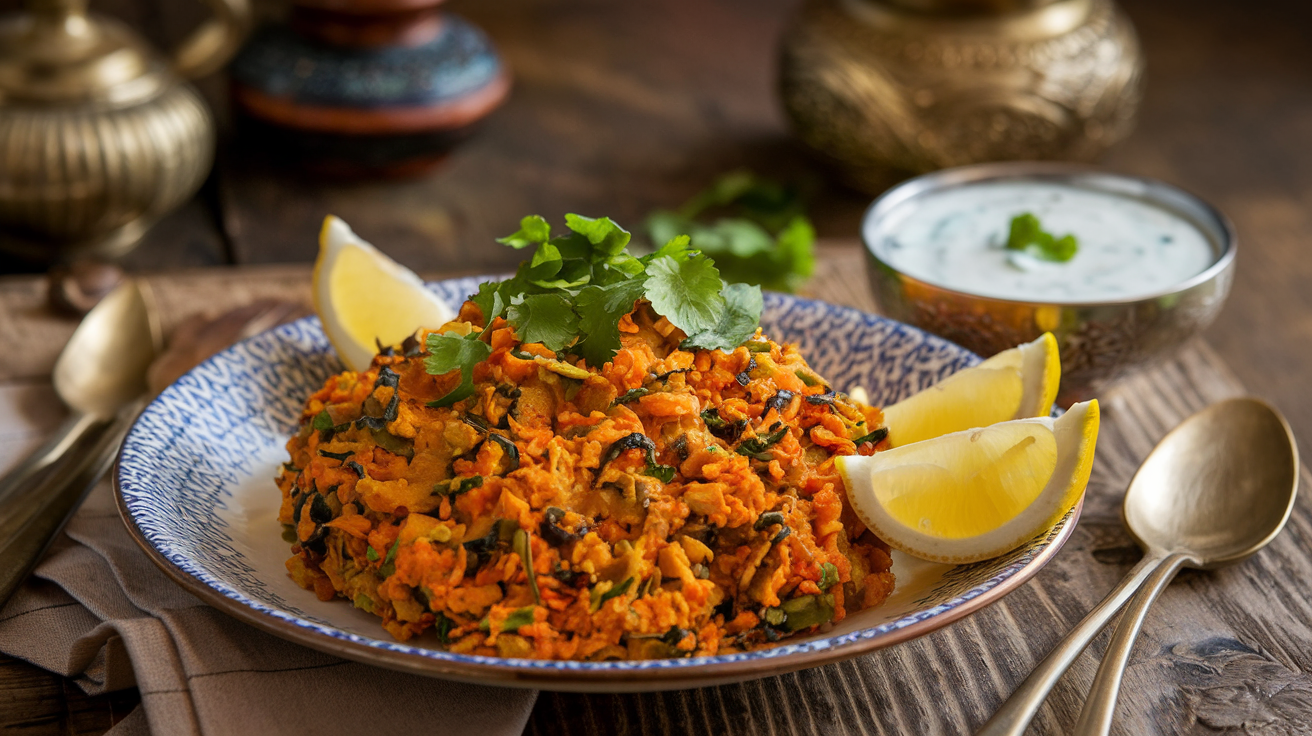
Transforming your kitchen with this zero-oil soya keema recipe opens up a world of plant-based possibilities. The simple process of preparing the aromatic base with tomatoes, onions, and spices, then incorporating perfectly soaked soya granules, results in a dish that rivals its meat counterpart in both flavor and texture. Whether you serve it with pav, paranthas, or as part of another creative dish, this veggie keema delivers satisfaction without compromise.
Ready to embrace this healthier alternative? Give this soya keema recipe a try today and discover how plant-based cooking can be both nutritious and delicious. Customize it with your favorite spices, pair it with complementary sides, and share this flavorful creation with friends and family. Your journey toward more mindful eating doesn’t mean sacrificing the flavors you love—it means reimagining them in ways that nourish both body and soul.
